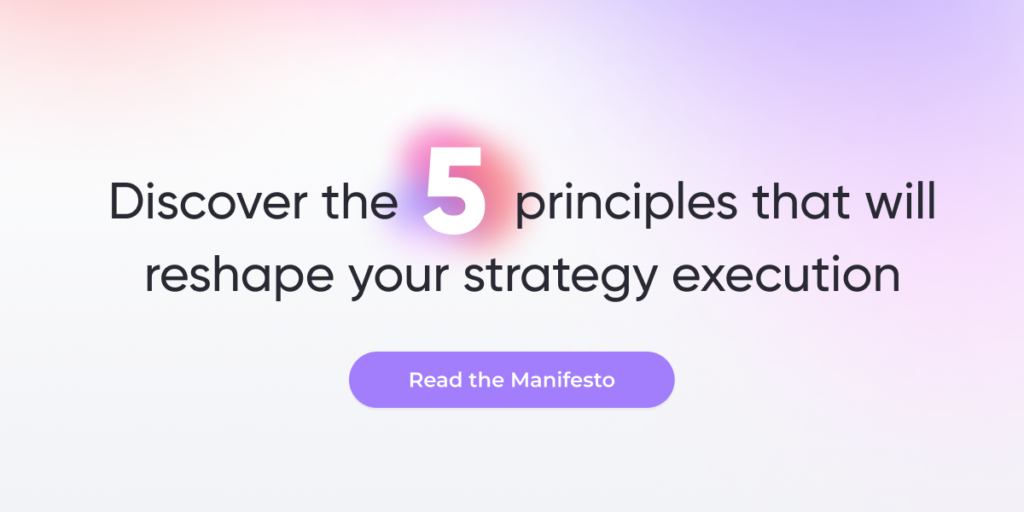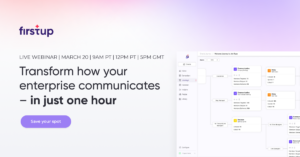Employee advocacy has become a game-changer for organizations aiming to strengthen their brand and connect authentically with their audience. Leveraging employees to share company messages within their networks offers an unmatched level of trust—93% of people are more likely to trust content shared by someone they know. By empowering employees to share company news, products, and culture through their personal lens, organizations can unlock the full potential of their workforce.
Not only does this boost the company’s external reach, but it also nurtures employees’ personal growth, helping them become thought leaders in their field. The result? A more engaged, motivated, and connected workforce driving both brand awareness and company culture forward.
Key Insights
- Employee advocacy increases brand visibility as employees share company-approved content through their personal networks.
- A well-designed employee advocacy program enhances brand awareness, showcases products, and reflects company culture.
- Employee advocacy also benefits employees by expanding their professional networks and building personal brands.
- 76% of people trust content shared by friends and employees more than traditional corporate messaging.
- Using an internal communication tool helps companies engage frontline workers and improve employee advocacy efforts.
- Tracking metrics like engagement and social reach ensures your advocacy strategy is on target.
What is employee advocacy?
Employee advocacy is a marketing strategy that leverages employee networks (think friends, family, social media) to increase awareness and promote a company and its products/services. Since employees themselves most often understand a company better than outsiders, their authentic messages can be a major boost to any social strategy an organization puts in place.
A well-designed employee advocacy program amplifies brand awareness, showcases products and services, and offers a genuine glimpse into the company culture by allowing employees to share content through their voice, often facilitated by employee advocacy platforms.
In addition to benefiting the company, employee advocacy helps employees build their personal brands by expanding their professional networks and enhancing their career growth. For example, Adobe has implemented a successful employee advocacy program that not only increases visibility but also helps employees establish themselves as thought leaders. According to Adobe’s 2023 Digital Trends Report, their employee advocacy programs have led to a 25% increase in brand awareness and a 30% boost in employee engagement1. This win-win scenario strengthens both the company and the employee, fostering increased brand awareness while improving internal company culture.

Why is employee advocacy important?
An organization’s employees are its best and most important asset, so having employees participate in an employee advocacy program while building their personal brand is a win-win for both parties. The company benefits from engaged employees who help to increase brand awareness in a credible way, while the employees gain opportunities to expand their professional networks and strengthen their personal online presence. This two-way benefit creates a more engaged workforce and encourages a positive company culture, as employees feel more connected and valued.
93% of people trust brand information shared by their friends and family
This trust factor underscores the value of employees as brand ambassadors, not just promoting company content but representing the brand’s values in an authentic way. Successful employee advocacy programs can improve employee productivity, boost team morale, retain control over brand messaging, and establish employees as thought leaders. These programs make it easier for HR to attract and retain top talent while increasing revenue—highlighting that employee advocacy is key to a company’s growth and long-term prosperity.

What is an example of employee advocacy?
Specific tactics and methods for an employee advocacy program vary by business type and location. Still, generally, it enables a company’s employees to be powerful brand advocates.
Here is a quick example:
Atrium Health, which provides healthcare at more than 1400 care locations and 40 hospitals across NC, SC, GA, and AL, wanted to share personal employee stories internally to connect employees to the health care provider’s purpose and each other.
To do so, they built Team Teal, a group of highly engaged, passionate teammates to help share their stories. Powered by Firstup, the team utilizes an intelligent communications platform and mobile app, branded Teal Insider, to reach their vast network of clinical locations and frontline workers, who don’t all have access to a desktop computer terminal.
You can learn more about this employee advocacy plan by watching Caring is Sharing: How to build employee advocacy that works with Atrium Health
Developing a strategy for your employee advocacy program
It’s good to have a plan
In an era of declining public trust (think viral conspiracy theories, “alternate” facts, etc.), it’s important that your company is seen in a positive light (especially on social media) and trusted to be who they say they are.
With that in mind, who better to be employee advocates and goodwill ambassadors for your brand or service than your workforce? If a trusted friend can vouch for where they work, the company is more likely to be trusted by the general public.
So how do you go about implementing a successful employee advocacy plan? The first step is always to make a plan, and our Employee Advocacy Ebook is a good place to start.
A key part of any successful employee advocacy program is getting your employees on board, informed, and excited about providing positive, public information that promotes your strategic priorities.
In other articles, we discuss using compelling content and employee recognition to help encourage employees to disseminate content about the organization on their personal social media accounts. In addition, you will need to provide employee advocacy training to those in your workforce that may not be familiar with how it works (more on this later).
We also explore how creative ideas are incredibly important to helping design a productive employee advocacy program that helps spread the word about your brand and gives your employees the chance to demonstrate their subject-matter expertise and thought leadership.
Now, let’s talk about organizational structure and employee participation.
Admittedly, this may not sound as exciting as creating fresh content everybody wants to read, rewarding employees for sharing neat giveaways or designing fun contests. Yes, you can create all the cool stories you want. However, you better have a formal employee advocacy program to make sure that content is getting shared, too.
According to LinkedIn, the click-through-rate (CTR) on a piece of content is 2x higher when shared by an employee versus when shared by the company itself.
Do your employees have the employee advocacy tools or platform they need to be successful?
Here are some suggestions for developing an employee advocacy strategy that will yield results while keeping employees engaged.
Communication is key
Excellent employee communication is the foundation of employee advocacy. Look at it this way: Nobody enjoys getting left in the dark. Everyone wants to feel like they’re in the know. Keeping employees informed of the latest company news makes them feel engaged and valued.
Two-way communication between employees and their company keeps workers informed and makes them feel included, boosting positive perceptions of the organization.
Focusing on delivering relevant information is the best way to drive advocacy. If employees understand the organizational mission and appreciate how their efforts are contributing to that goal, they are far more likely to share the content you create on their own networks, as well as provide their own content. That’s because they feel like they’re part of the team.

That’s why, as experts in employee advocacy, we recommend that customers use our platform to deliver relevant information to their workers AND encourage employees to share company-approved content through social media channels. They go hand-in-hand.
At Firstup, we drink our own champagne. Our company’s employee advocacy program that we call Nextup is the main channel of company news. It’s also a treasure trove of curated content that employees can share with their friends, family, and their social networks to highlight the great things happening at Firstup.
Role of metrics in adoption and participation
Employee advocacy is a number and data game.
By all means, get your creative juices cranked up and produce riveting blog posts and funny videos that your members will enjoy that support brand advocacy. Yet, it’s also crucial to set targets and metrics so you can track the progress of your program. Doing that first requires research on your part. You need to understand what content is resonating and with whom. What’s the target audience? What channels are effective? What time are people looking at content?
These are the kind of benchmarks that will help you chart a path to program success. Data should serve as your roadmap. Use it to establish realistic and achievable goals, such as the number of members enrolled, active users, the amount of content they share, and so on.
By tracking that data, you can be flexible in fine-tuning your company content and advocacy program to ensure you’re making progress toward your goals.
Belonging drives engagement
Understand the data
One piece of advice, though: It’s important to understand what the data tells you. A successful program will do that.
For instance, we’ve seen an immediate 25% increase in sharing when an employee advocacy community was rolled out to the entire company instead of being limited to a smaller handful of members in a test program. On one hand, that’s great! But also understand that launching a program to the whole organization inherently means you have more people enrolled. That huge undertaking can result in more questions, demands, and community management.
Meanwhile, companies utilizing an employee advocacy pilot program will have fewer participants. But they also will be able to establish company trends that will likely scale upon a later corporate rollout. So, the immediate impact might be less. But it also might lead to greater, long-term adoption.
Our point is this: Whatever your strategy, establish understandable metrics tied to goals that are important to your business. Use these benchmarks to help you track adoption and formulate best practices for establishing external engagement through sharing. Are you creating content employees want to share on social media platforms? Are you delivering it to them when they’re more likely to share? What platforms do they like to use to share content? This is great information for you to improve your employee advocacy efforts.
“With baby boomers exiting the workforce, and a huge audience of millennials and young talent entering the workforce, we just knew that it was time to think about a different way of communicating. Our intranet was outdated and not mobile optimized, and we saw that the Firstup platform would give us the unified communications we were looking for.”
— Lindsey Sofia, Corporate Communications, Lincoln Financial
Training sessions
The idea of an employee advocacy program is not entirely new, and it’s a mistake to assume your employees are experts. An employee advocacy platform like Firstup that can easily link to their personal social media platform might be quite intimidating for some people.
We have an answer for helping to overcome this fear.
We provide “guardrails” for workers to safely share company-approved content. For instance, information that a company wants to share is clearly marked. Communicators can even provide some suggested text that employees could add to their social media posts.
Meanwhile, our platform also prevents employee advocates from sharing content designed to be only for internal eyes. Communicators can block content that they deem to be sensitive information that shouldn’t be shared externally. Companies always remain in control of the message.
So, we recommend creating employee advocacy training sessions that educate employees and make them feel more confident and comfortable about being active on social media. It’s also a perfect opportunity to explain that this is an opportunity for people to build their personal brands. After all, employee advocacy should be about the people first, not the company.
It’s a good idea to pre-register your employees for the platform and walk them through the onboarding process. But the greatest success comes with a structured program. It’s more than teaching people about how to use the platform. It should be about online best practices along with tips and tricks. It will also demystify social media for those who don’t have much experience with Facebook, Twitter, LinkedIn, and so on.
One of the best examples we’ve seen comes from business analytics software company SAS, which for 21 consecutive years has been listed in Fortune magazine’s Best Companies to Work For list. The company created an award-winning program called “The 140,” named after the old Twitter character count limit.
In just a few years, more than 600 people have gone through the employee advocacy program, where they learn about things like taking great photos with mobile devices, using hashtags and creating their LinkedIn profiles. As they feel more comfortable with social media, they become more likely to share SAS content.
Segment your members
Understanding your employees is not a new tactic. People have been trying to gather data points on user behavior for years. But it’s especially useful in employee advocacy. By segmenting your employees based on department, role, location, or even online activity, you can help develop content that will resonate more effectively with each segment while not overloading every employee with constant messages that may or may not be relevant to them.

For instance, one successful tactic we’ve seen is when companies cultivate their online “power” users. These are the people who love social media and who are already active in sharing content and taking part in online discussions. These are your digital “Johnny Appleseed” employees who can plant the seeds of broader success for your employee advocacy program. Getting them involved can be your catalyst.
In our article Internal communication and employee advocacy: Better together, we discussed the 1/9/90 rule, something Michael Brito, the author of “Participation Marketing: Unleashing Employees to Participate and Become Brand Storytellers,” believes in. One percent of your employees will be the storytellers who lead conversations. Nine percent will actively share that content within their networks. The other 90 percent of employees are likely only to passively follow the conversation and share content occasionally, or maybe not all. They’ll watch the conversation. And that’s perfectly OK!
Not everyone wants to be involved in an employee advocacy program. The goal, of course, is to mobilize and empower those “hand-raisers” who want to share your brand story. Read our guide to why employees are your best ambassadors for in-depth tips and tricks for doing just that!
Conclusion
Planning and implementing an employee advocacy program can be difficult, but using the right employee advocacy platform to help you build one makes it easier. When utilized correctly, it can be a game-changer for any organization.
Employee advocacy is not a one-time effort; it requires ongoing adaptation and support. Regularly assess employee engagement and consider starting with a pilot program before scaling. A successful program benefits both the organization and employees, so don’t get left behind—start implementing your advocacy plan today to stay ahead in this evolving landscape!
Deliver a hyper-personalized employee experience at scale
An employee advocacy program empowers employees to share branded content, increasing visibility and engagement while building trust through personal networks.
Start by developing a clear employee advocacy strategy that aligns with your social media strategy, providing the right tools and training to get employees involved.
Employee advocacy is when employees participate in promoting their company’s brand via social media posts and personal accounts.
Employee advocacy software simplifies the process by offering shareable content, tracking engagement, and encouraging participation across the company.
By encouraging employees to act as employee advocates, marketing can extend the company’s reach and credibility beyond traditional campaigns.
Motivate employees by aligning the program with personal and professional growth, offering incentives, and creating content they’re excited to share.











